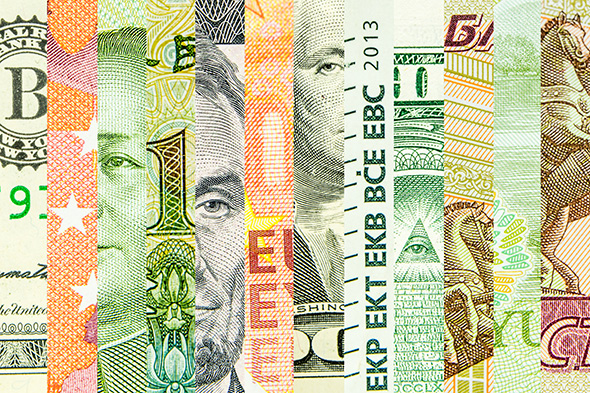
To devalue or not to devalue? That is the question. During the last decade, Latin American central banks have effectively steered the rudder of monetary policy, avoiding major devaluations of their currencies–with the exceptions of Argentina and Venezuela.
Recognizably, there have been incremental devaluations in the region as a country may devalue its currency to combat trade imbalances. Chile and Peru are examples. Resultingly, a nation’s exports become less expensive and, therefore, more competitive in global markets; imports become more expensive, making domestic consumers less likely to purchase them.

While currency devaluation may appear to be a wise economic policy choice, it can surely have negative consequences. The result of imports becoming more expensive has the effect of protecting inefficient domestic producers. Higher exports relative to imports can also increase consumer demand and fuel inflation. In the case of industrial buyers from emerging markets that need imported machinery and other capital goods to produce for either the domestic or export market, currency devaluations imports more drive up the prices for their customers, squeeze their profit margins and, in the aggregate, contribute to inflation.
The “perfect storm” of a drop in oil prices, a slowdown in the Chinese economy, and sluggish consumer and industrial demand in industrialized nations is whipsawing Latin American economies, especially large commodity producers such as Argentina, Brazil, Chile, Colombia, Mexico and Peru. Not surprisingly, Latin American GDP is expected to grow less than 1% in 2016 with Brazil and Venezuela continuing to post negative growth rates. There is nothing on the horizon to seriously challenge this doom-and-gloom scenario.
Rather than address the real causes of economic conditions that trigger currency devaluations and respond with viable remedies, political leaders often turn to scapegoating–usually casting the blame on other nations. For example, in September 2010, Brazil’s Finance Minister, Guido Mantega, used the term “currency war” with reference to monetary policies implemented mainly by China, Japan, Thailand, South Korea, Colombia and other countries to generate an artificial devaluation of their currency in order to achieve a cheaper, more competitive domestic economy that may be attractive to foreign investors, as well as to be able to withstand the 2008 economic crisis.
More recently the term “currency manipulation” has been bandied about, most prominently among a number of U.S. presidential candidates. These contenders assert that China, specifically, undervalues its currency to gain an unfair advantage in global trade. However, devaluation and revaluation are the prerogative of sovereign monetary authorities. The U.S., in fact, manipulates its own currency through interest rate manipulation. As economist Matthew J. Slaughter points out, in today’s globally networked economy trade competitiveness tends to vary little with the movement of any one currency.
Admittedly, however, the decline in China’s yuan is fueling turbulence in financial markets across the world and could well unleash a cycle of competitive devaluations of currencies. How would a series of currency devaluations impact Latin America’s private sector? Large corporations such as JBS, Cemex, Argos, Techint, and Cencosud have the wherewithal to weather economic recession and financial volatility, while small companies, especially microenterprises, that struggle for survival in even good times will find the business environment even more challenging. But what about new businesses? Given the explosive growth of new business formation (NBF) in emerging markets, particularly Latin America, and the emergence on technology-based entrepreneurial ecosystems in major metropolitan areas throughout the Hemisphere, this question is of special importance.
In a recent study, colleagues at Colombia’s EAFIT University and I examined 30 emerging markets, including a number from Latin America, during a seven-year period to determine the impact of devaluation on NBF. We found that while devaluation clearly boosts NBF, the effect is not lasting over time and loses significance after two years–even sooner if a country’s competitiveness is not strong to begin with.
Luis Videgaray, Mexico’s finance minister opined about competitive devaluations in a recent speech at the Foreign Ministry in Mexico City: “It’s frankly a perverse process, because at the end of the day if all countries engage in a competitive devaluation, no one becomes more competitive, and you generate financial dislocations.”
Should the next twelve months witness a resurgence of growth in China, a reversal in commodity prices, and faster economic growth in Europe and the U.S., currency devaluation as a monetary prescription will be relegated to the back burner of economic policy.
That will surely make 2016 a happy new year for Latin America.
Jerry Haar is a business professor at Florida International University and a Global Fellow at the Woodrow Wilson International Center for Scholars in Washington. He is also a research affiliate of the David Rockefeller Center of Latin American Studies at Harvard University. The opinions expressed in this column are the writer’s and do not necessarily reflect the views or opinions of either FIU or the College of Business.
View all articles by Jerry Haar.
This column originally appeared in Latin Trade on January 20, 2016.





